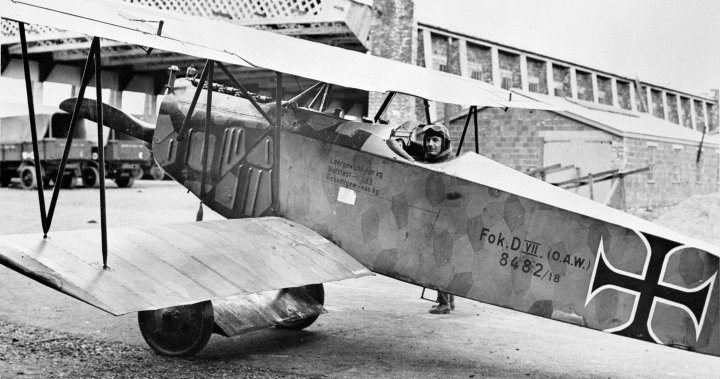During the First World War, pilots took to the skies in combat, flying aircraft that were still in the development stage. These planes were made of canvas over a wood frame and were held together by wire, making them underpowered and flimsy. Even training could be dangerous, and many pioneering pilots lost their lives during this time. A total of 252 New Brunswickers served as airmen in the British air services, making important contributions to the war effort. They flew not only on the Western Front in France and Belgium but also in various other locations such as Italy, Russia, Egypt, and Palestine.
Chief historian Tim Cook explained that as flight evolved during the war, large-scale dogfights became common among airmen battling for control of the air. While the glamorous fighter pilots captured the attention of the public, observation aircraft played a crucial role in providing intelligence to commanders, gunners, and infantry on the ground. Major Albert Desbrisay Carter, a New Brunswick native and Great War ace, shot down 28 German aircraft over the course of the war before being taken prisoner in 1918. He continued to show bravery and defiance even while in captivity, standing up to his German captors and ultimately dying in a training exercise in 1919.
The book also details the experiences of other New Brunswick airmen, such as Lieutenant Alfred Belliveau, who trained on two-seater aircraft in England before moving on to fighter pilot school in Scotland. The pilots engaged in dogfighting using cameras instead of machine guns to practice aerial combat techniques. Despite being a minority among airmen, New Brunswickers made significant contributions to the war effort and played a vital role in advancing the technology and tactics of aerial warfare during this period. They were pioneers in this form of warfare, facing challenges and dangers that had never been experienced before in the history of warfare.
J. Brent Wilson, the author of “War Among the Clouds: New Brunswick Airmen in the Great War,” drew on letters and records from the airmen to document their experiences and the impact they had on the wider war effort. Wilson emphasized the importance of remembering these individuals, particularly those who came from rural New Brunswick and made sacrifices for their country. The stories of these airmen provide insight into the early days of aviation and the bravery and innovation of those who took to the skies during this pivotal moment in history.
The airmen from New Brunswick faced challenges and dangers that came with flying aircraft that were still in the early stages of development. Despite the risks, they made significant contributions to the war effort, flying in various locations across Europe and beyond. Through their experiences, the airmen played a vital role in advancing the technology and tactics of aerial warfare during the First World War, paving the way for future generations of pilots and shaping the course of aviation history. Their stories serve as a reminder of the bravery and sacrifice of those who served in the skies during this crucial period in world history.


